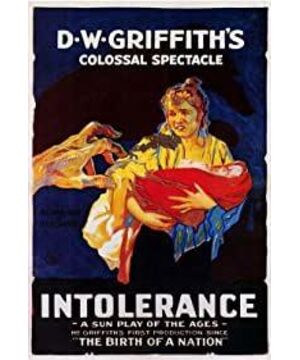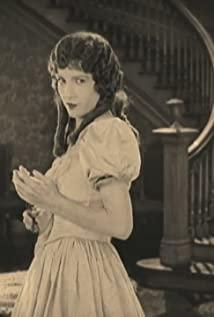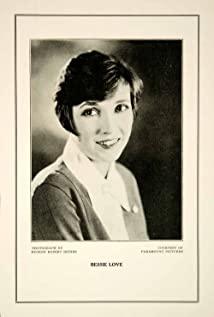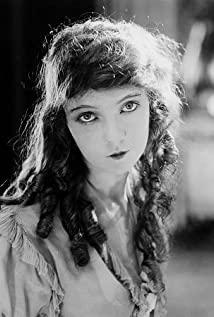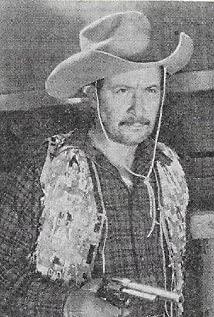Griffith was born in Kentucky, the United States, his father was a colonel in the Confederate Army, and was bankrupt due to the Civil War. Griffith, from a poor family, had a difficult experience running around to survive. He is compassionate and a humanitarian. In his later creations, he prominently displayed an ideal of warmth and pacifism. He wished that human beings would treat each other sincerely, without poverty, without evil, without bars, without war. From his short films to his feature films, while solemnly revealing historical and social realities, the works are filled with "sentimental and romantic innocence". Griffith was a literary youth when he was young. At the age of 15, he first worked as an elevator driver in a store, and then transferred to a bookstore as a clerk, where he was exposed to contemporary literary works and met local poets and actors. This broke into the literary circle. Griffith was bent on becoming a great writer, and he was deeply influenced by Dickens' novels, which he showed again and again in his later films.
After publishing a play or two and a collection of poems, he was invited by the great director Edwin Porter to appear in a film invested by Edison Films. In this way, Griffith became an actor and wrote some scripts to sell. to the company. Later, the company was short of staff and asked him if he would like to write and direct it himself. Since then, Griffith officially began his directorial career. In Griffith's early creations (1908-1912), at an average rate of two films per week, he shot nearly 450 short films within 10 minutes for Biograph. His creative speed far exceeded the company's expectations, so he quickly became the company's main director and the company's absolute artistic authority. Shooting short films, although limiting Griffith's play, has cultivated his ability to tell a story in a very short space. Griffith loves literature and is good at melodrama. Most of his short films are taken from novels, poems and plays, among which the most representative themes and styles can be roughly divided into the following aspects:
1. Good and evil in society: "The Lonely Villa" in 1909 and In 1911's "Londel Reporter" and other films, they are all in the form of chase films, describing how the irrational evil forces attacked the kind and innocent people, how to get the heroic counterattack of the rescuers who came to hear the news. .
2. Family comedies: In films such as "Mr. Jones Has a Game" in 1908 and "The Transformation of an Alcoholic" in 1910, the husband is always alcoholic, playing cards, and pursuing women, while the wife is always moral, Moderately wait for the prodigal son to return. The film mocks the conflict between the husband and wife in a comedy.
3. The conflict between the rich and the poor in the society; in 1909, films such as "Wheat Country Merchant" and "Pig Alley Musketeer" were also in the form of social dramas, showing the different social morals and unreasonable behaviors of slums and corrupt classes. class relations. Of course, there are also police and gangster films like "Swordsman of Poor Lane", and war films like "Holocaust" and so on.
In these short films, Griffith is very different from Bout. As early as 1912, there was a statistical data showing that the total number of shots in short films (single) at that time was usually 11 to 46 shots, but Griffith actually used as many as 60 to 100 shots for performance. Griffith realizes more maturely than Bout that in the film "the essence of a 'scene' involves not only the arrangement of performers and objects in space, but also the arrangement of individual shots in time. Whereas Griffith began to make a lot of transitions between scenes, Griffith directly deconstructed the dramatic space and then reassembled it to suit the audience’s mental and emotional engagement.” In Baut's case, scenes, passages, and shots are the same thing and play a role in advancing the narrative. In Griffith's case, a scene or paragraph is composed of several shots, and the scene or paragraph is not only the connection of the plot, but also acts as a visual concept. In addition, Baut pays attention to the development of the plot and the form of external actions. And Griffith attaches great importance to the emotional factors of the action, emphasizing the performance of the emotional value of the film, so the narrative of the film is more complicated. This is the key to what Griffith is called an artist and his films are called works of art.
In 1915, Griffith, who was mature and ambitious in all aspects, finally had the opportunity to show his skills after jumping from the original company and began to film "The Birth of a Nation". The Birth of a Nation was 12 copies long and cost $100,000, setting a precedent for Hollywood's later "luxury blockbusters." Griffith brings together the experience he has gained while shooting short films, and in this film, which is set in the American Civil War, the unique expression of cinematography and editing, and the use of different Scenes, changing angles, camera positions and mobile photography, etc., using techniques such as "transformation", "circling in and out", "fade in and out", "flashback", etc., and finally carefully constructed with 1500 shots . In the 3-hour film, there are both spectacular scenes and historical greats on the screen, as well as delicate warmth and ordinary people; there are not only cruel wars, tense rescues, but also comfortable life and the expression of wonderful tastes. . In order to pursue the reality on the screen, Griffith refers to the real photos taken by Matthew Brady during the Civil War, and imaginatively plays and creates on the screen, forming some wonderful passages. Such as the Battle of Petersburg, the assassination of President Lincoln and so on. However, there are some unacceptable fictions in the film, such as black people's abuse of white people, the victory of the Ku Klux Klan "to fight violence with violence" and so on. Magneto Lawson said of the film that "there has never been such a striking contradiction between the revolutionary nature of technique and the reactionary nature of content".
"The Birth of a Nation" tells the story of white people who went to the South to be persecuted and murdered by black people during the Civil War, and had to rise up to resist and organize the Ku Klux Klan for self-defense and revenge. The content and themes of the film are strongly racist, discriminating against and insulting black people to glorify the Ku Klux Klan. This may have something to do with the racism that Griffith's Confederate colonel father instilled in him as a child. This interpretation of history has aroused strong social repercussions, and people have expressed their opinions and written articles, denying the political content of the film. Black people in particular were extremely dissatisfied, and there were parades and riots in some places, and the film was banned in Yibu in some cities. Faced with severe condemnation from people from all walks of life. Griffith was deeply shocked. He believed that he had both a real "Uncle Tom" who sympathized with white people and a few "real souls" in the film, which had softened the racial contradictions of "The Klan" . To this end, he wrote a short essay "Freedom of the Screen", pointing out that those who criticized him violated the freedom of cinema, while stating his humanitarian stance. However, the controversies themselves resulted in the film becoming commercially lucrative and a huge success, making $1 million in just one year, setting a box office record unheard of in film history. This fact has greatly stimulated the reform of American film companies in terms of operation and distribution, paving the way for Hollywood to produce large-scale luxury feature films. Sadur said: If you look back on history well, "February 8, 1915, the day when The Birth of a Nation was first released in the United States, was the beginning of Hollywood's domination of the world, and it was also the time when Hollywood art dominated the world for at least the next few years. the beginning".
If "The Birth of a Nation" is Griffith's masterpiece to show his talent and create box office, then "Party to Fight Differing" is Griffith's response to others' accusations and self-defense, and it is of course the pinnacle of his film art. While there was a strong swipe at The Birth of a Nation, Griffith conceived of a much grander version of The Same Thing. He will further extend and develop in this film the views and messages that he did not express clearly in The Birth of a Nation. It highlights a common theme: from ancient times to the present, all the bloodshed, killings and wars between various ethnic groups are due to hatred and prejudice. In order to save himself from being a victim of gangsterism, Griffith chose the best way to defend himself with his work, and "Algerism" has indeed become a very wonderful defense of Griffith.
"Party Fighting Differing" consists of four relatively independent storylines in different eras and different regions. The core story of the four stories is "Modern Story" "Mother and the Law", and the other three metaphorical stories are used as a foil, namely "The Passion of Christ". , "Saint Bartholomew's Day Massacre", "The Fall of Babylon". The selection of these stories from different time and space is to strengthen the universal significance of the theme. Among them, "Mother and Dharma" is the basis of the film, and the other three stories have tragic endings. While "Mother and Law" casts a warm veil on bourgeois law in the handling at the end, it objectively reveals the class contradictions and class conflicts in capitalist society. Griffith intertwines these four storylines that happened in different eras, but they all contain human cannibalism, and in the form of visual representation, the famous poet Whitman's "cradle swing, The verses that connect history and the future" are abstractly represented as a scene of a mother's cradle, and are inserted into the film's passages from time to time as a metaphor for "the passing of the times". Thus, the theme of "rejecting dissidents and fighting for benevolence" in "The Party's Commonwealth and Fighting for Differences" is unified.
At the same time, Griffith's keen perception of the time-space structure of films, his excellent creative ability, and the establishment of the narrative form of films are fully reflected as part of his conceptual system in "Party to Fight Differing".
The narrative form of the film
The narrative form of Griffith's films is clearly influenced by Dickens' novels. In Griffith's "Parties," the shots or passages are expressed along the causal relationship of specific plot development. But Griffith's editing technique of alternating montage clearly distinguishes the film from the narrative form of traditional art. In particular, the film combines the narrative time and space of the four stories at will, using the plot paragraphs as the basis of the narrative, juxtaposing and accumulating different conflicting elements, and gradually forming his film narrative form. As Griffith described the story of "Party vs. Differing" in terms of rivers to people: "The four stories begin as four separate rivers that flow down from the mountains, and they flow slowly and calmly; then they gradually approach, the more The flow gets faster; in the end they merge into a thrilling, emotional torrent." Here, Griffith is not just thinking about how to record moving objects, or just doing some technical experiments, but the creative focus The focus is on recognizing and discovering the formal characteristics of the time-space structure of film, and truly regards film as a new narrative art.
Second, the narrative time
of the movie The performance of "Party to Fight Differing" in the narrative time of the movie is amazing. The four stories he narrates alternately are "thematically related, far apart in time, and unconnected in plot development". In the performance of the grand narrative time of the film, Griffith combines the specific visual picture with the abstract thinking concept, so that the construction of the film plot enters the interpretation of the film's meaning, which greatly exceeds the actual narrative time of the film. It expands the psychological time of the film's narrative, giving it a contagious and shocking power. Of course, the exploration of narrative time in "Party and Diversity" also has a failing side of the film. The most complete version of "Party Dissent" that we can see now is two hours long, while at the time, the film was more than three hours even compressed. As the length of the silent film narrative, the film did make the audience impatient at the time. At the same time, the forced switching between the film's four unrelated storylines, the division of narrative time caused by the film also leaves the audience at a loss. The reason why the film failed miserably at the box office now seems to be mainly because the film was too innovative and advanced in content and form, beyond the range that the audience could bear at that time. It seems that our current audience is "too long, too boring and too difficult" to not watch it and refuse to pay.
The narrative space of the film
While the four stories in "Party and Diversity" are improving their respective narrative tasks, they have distinct differences and ingenious connections in the performance of narrative space. The main way the film uses to distinguish the four stories is the modeling effects and visual information from the narrative space such as characters, costumes, and scenery inside the picture, rather than relying on subtitles or subtitles. Among them, the most representative is the performance of the narrative space of "The Fall of Babylon". Griffith followed the principles of Lumiere's outdoor real space shooting, and applied Méliès's way of setting up the set in the studio to the outdoors, creating the largest set of the majestic and imposing Babylon castle in the history of world cinema. In order to animate the set, Griffith also enriched the texture and three-dimensionality of the set with different lighting effects, different camera angles and different emotional scenes. Griffith's camera truly went from "a mere recording tool" to "a dynamic modeling tool," enhancing the visual and authentic appeal of the screen's narrative space.
And Griffith's greater contribution to the narrative space of the film is his concept of space that breaks through the shackles of the story space and the shackles of the picture frame. After nearly two hours of training and training in the film, at the end of the film, the paragraphs and shots are shortened, the rhythm is suddenly accelerated, and subtitles are not needed. The contrast between the modern means of transport in "Mother and the Law" and the ancient means of transport in "The Fall of Babylon"), can put both reason and emotion into and participate in the narrative of the film.
4. The Narrative Language of Film
Griffiths geniusly realized that a picture is a universal symbol, and a moving picture (referring to the film) is a universal language. Griffith's unique performance in the film's narrative language is often considered to be the use of close-up and long-range shots. We know that the close-up shot was not an invention of Griffith, but he was the first to realize that the feature of the shot was an essential cinematic narrative language. The most famous of these is a close-up of the wife (Mae Marsh) clasping her spasmodic hands in court, showing her nervousness. Griffith uses a more specific, accurate and vivid visual means to highlight his style, characteristics and concept of narrative language.
The long-range lens is not limited to the single function of the recording method in the early films, but is used as an interpretation of the environment, atmosphere, mood and state in the narrative language. It should be noted that the contribution of Griffith's film narrative language is not only reflected in how he comprehensively, systematically and skillfully uses a series of visual lens language from close-up to long-range, or panning and moving shots. , and more importantly, he "established the principle of taking the lens as the basic unit of film space-time structure". This principle has in fact become the basis of our modern film splitting and editing. As it is often said: before Griffith movies were just some patchwork of letters, and from Griffiths, movies began to have the syntax of the screen.
There are also many very important contributions to Griffith's film narrative form. For example, he pays great attention to the performance of the narrative rhythm of the film, and the rhythmic editing called "last minute rescue" is the best example of it. This has been used in his short films and "The Birth of a Nation", and it is even more wonderful in "Judging the Same and Fighting the Difference", which has become a major feature of his works in terms of rhythm and form.
In using this rhythm technique, Griffith also found different and more complex emotional changes produced by different rhythm clips, such as: slow switching can cause quiet and leisurely, fast switching can cause Tension and urgency, subjective switching can reveal characters' thoughts and intentions, etc. Through the rhythm and speed of editing, the film can produce suspense and drama, and can be full of meaning and reason.
Griffith also places special emphasis on the role of actors. In his article "My Requirements for a Movie Star", he clearly pointed out the difference between a movie actor and a theatrical stage actor. He believes that the film actor does not rely on exaggerated actions to show his feelings, but to show his soul with all the enthusiasm in his heart in front of the camera lens that sees the slightest trace.
He also pays great attention to the expression of emotion and often uses objects as a symbolic means to express good emotions. For example, animals are used to convey people's emotional states, flowers are used to convey beauty and noble sentiments, and so on. Griffith's contributions to many aspects of the narrative form of film made him the first intellectual and poet in the history of film art.
However, the epic "Party to Fight Differing" became both the peak of Griffith's artistic creation and the end of his artistic creation. The multi-million-dollar blockbuster film suffered a fiasco and made him heavily in debt. His exploration and experimentation in the narrative form of the film was not accepted by the American film industry and American film audience at that time. Not surprisingly, the film is not a popular work even today. Griffiths has spent almost his life paying off the debt in the wake of "Party Dissent." However, his dedication to the art of film inspired the European avant-garde film artists of the 1920s. Although "Party to Fight Differing" suffered a commercial failure, it was later called an "avant-garde film" and became a well-known "brilliant failure" in the world's film history.
Notice
Part of this article is excerpted from Zheng Yaling/Hu Bin's "History of Foreign Films"
Click the link to learn more about Griffith | The "Brilliant Failure" Behind Crazy Genius
View more about Intolerance reviews


